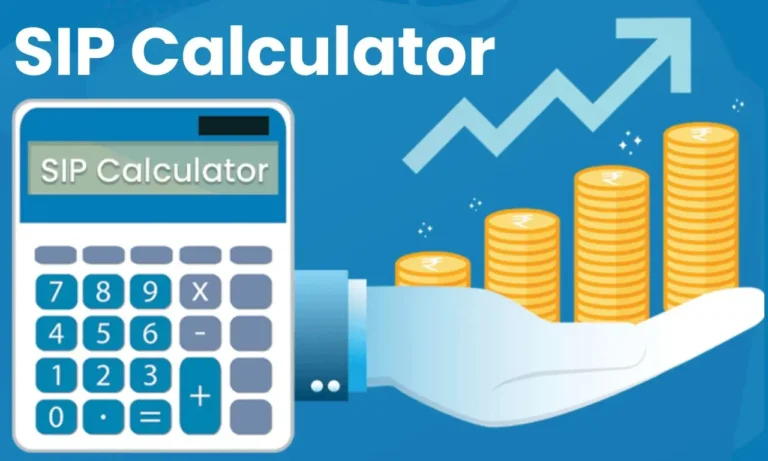SIP vs Lumpsum Investment
Most initial stage investors are concerned about either using SIP calculators or Lump sum as beginners are not aware about details of SIP vs Lumpsum Investment. You too want to invest? Confused?
With all details which a novice investor will require, this article will explore both for better investment plan and future predictions. By differentiating the characteristics and returns of both, we will puzzle out the best investment plan. So, let’s explore the major distinctive factors of both SIP and Lump Sum.
Lump Sum vs SIP Calculator: A Complete Differentiation
Here is a detailed comparison between SIP vs Lumpsum Investment to help you choose an investment plan wisely. If you are an absolute beginner then we will suggest you to read all points before stepping into the market. All major aspects of SIP calculator and Lump Sum are elaborated for better investment understandings. Consider, plan, and start your investment soon!
| Minimum Investment Amount | The minimum investment amount for SIP calculator is RS 1,000. | You can calculate expected returns even by only investing RS 100. |
| Method of Investment | In mutual funds, you have to invest an amount from time to time depending upon weekly, monthly, quarterly or yearly basis. | In mutual funds, you have to invest all at a time undividedly regardless of weekly, monthly, quarterly or yearly basis. |
| Cost of Benefit SIP vs Lumpsum Investment | By investing on a regular basis on SIP calculator, you can benefit from cost averaging depending upon what is the current market (Up or Down). | By investing on Lump Sum, you will not get any benefit due to all investment at a time. However, you will receive it as per Net Asset Value (NAV). |
| Timing the Market | Since the investment is done in various time periods, there is no hurdle in timing the market exactly. | Investors need to be strategic in Lump Sum investment. In order to get informed decisions, the timing of the market is required. |
| Risk Impact | Investors can not make risky decisions because SIP calculator focuses on Long-term goals. | Investors can make risky decisions because Lump Sum calculators are for the short term. |
| Market Volatility | SIP investors can benefit from rupee cost averaging due to purchasing more units when the price is low and lesser units when the price is high. | As the amount is invested at once so there is a higher risk of market volatility. |
| Time Period | An SIP plan reflects long-term market investment, which means investors don’t have to take risky decisions on an urgent basis. | However, investors in Lump Sum need to be aware of every condition for avoiding any risky decision on an urgent basis. |
| Beginners Friendly Characteristics | Once the setup is done by the investor then he can start operating investment. | In order to grow mutual funds, beginners are supposed to do proper research before choosing for the sum of their monetary level. |
| Easy Set up | A SIP setup is generally easy, which means investors only have to select desired funds, amount of investment and other useful banking details. | A Lump Sum setup is more effort taking. Depending upon certain conditions like market conditions and future goals, investors are supposed to invest as per current situation. |
SIP vs Lumpsum Investment: Which one is better?
An SIP investment plan is recommended to initial investors who do not want to expose the market at one time and also do not have any larger amount of investment. Initial stage investors are recommended to go with SIP, as it is an investment plan with a low budget and is for the long term. However, some major positive and negative points of SIP and Lump Sum are described below. You can survey it for the best Lump Sum or SIP strategy as per your conditions.
SIP Investment Plan:
A SIP plan is beneficial to those who need any long term returns with a minimum budget. Here are some points described for examining before stepping into any investment plan as per your requirement. Do consider it for best returns in market investment.
Affordability:
SIP allows investors to start investment with the least amount of Rs 100 which makes a large number of investors think for SIP. Investors with low investment level can go with SIP plan for affordability as per their Monterey level.
Flexibility:
SIP requires the investors to invest on a timely basis. The time period is completely dependent upon investors. Moreover, the amount of investment is also in investors’ hands. Investment in SIP calculators is more flexible.
Rupee Cost Average:
In SIP, investors are allowed to invest as per their budget on a regular interval of time. SIP investors can purchase a higher number of units when price is low and lesser units when price is higher. This approach can lessen the risk in any market volatility.
Long-term Approach:
SIP requires regular investment after a specific time interval, which means this strategy is for long-term approach. Moreover, investors do not have to make decisions on an urgent basis.
Lump Sum Investment Plan:
A Lump Sum plan for investment is recommended to those who require any short-term returns of their investment. It allows investors to step into the market at the same time. However, you can get higher returns depending upon various market conditions.
Risky Condition:
A Lump Sum investment is an approach in which the investment is potentially done at the same time, so there are higher chances of failure or loss without even getting any benefit. There are higher chances of risky decisions in Lump Sum on an urgent basis.
Higher Return Opportunities:
If Lump Sum investors used the right strategic approach then there are chances of higher return and market gaining. It allows investors to invest with Lump Sum as according to Net Asset Value (NAV). If Lump Sum investors have invested at right timings with best market strategies then there are higher chances of getting comparatively better returns.
Sudden Market Investment:
A Lump Sum is an approach in which investors are exposed to the market straight away in one go. This is sometimes very risky to begin with Lump Sum because you will get returns as per Net Asset Value (NAV).
Short-term Approach:
Lump Sum requires investment in one go and it is for short-term conditions. Also, Lump Sum investors tend to make risky decisions due to urgent basis and market standings. So, it is risky and allows investors to decide hurriedly.
Now, the decision is in your hands as per your requirement and priorities. You can choose an investment plan wisely from SIP vs Lump Sum according to your focus as budget level.
Frequently Asked Questions
Conclusions
If you are initial investors at beginners level, then we recommend you SIP plan as it is free from direct market exposure and it is for the long term. Moreover, if you want short term returns then you can choose Lumpsum. Additionally, if you are looking for low risky decision scenarios, then SIP is highly recommended.



